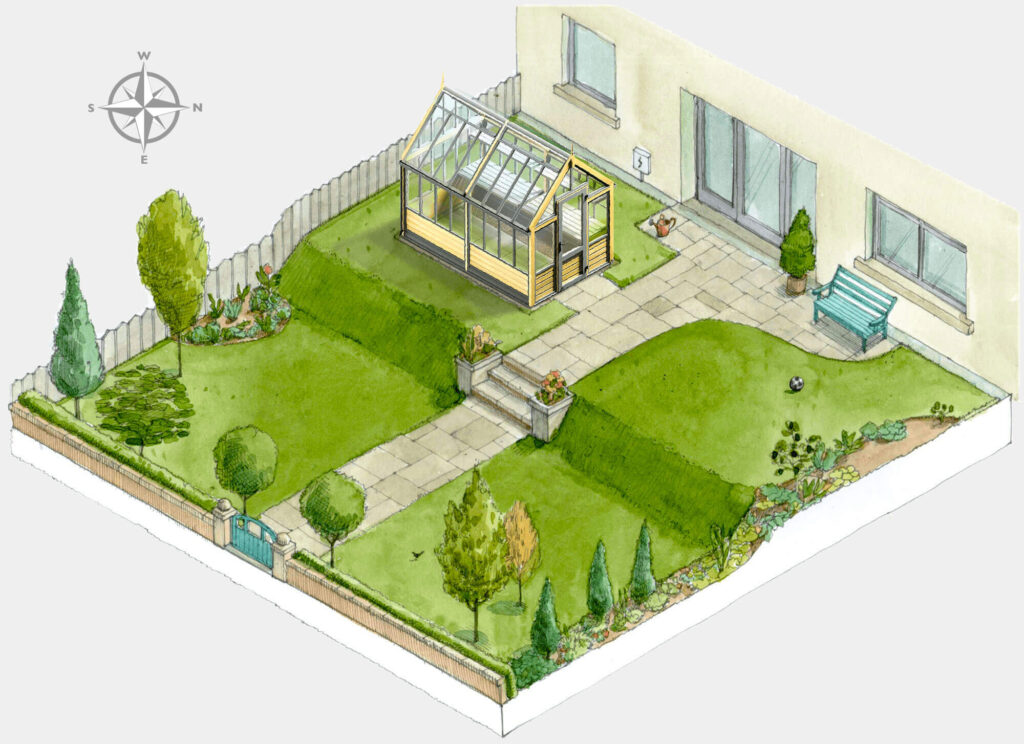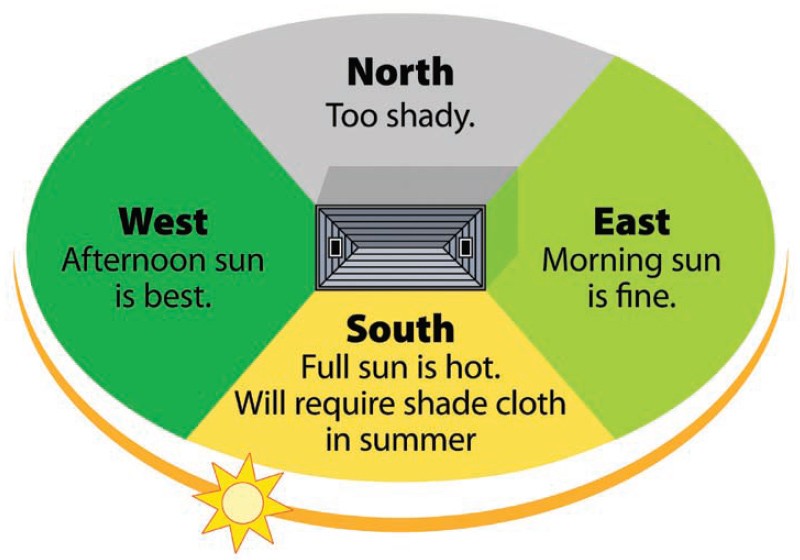In small gardens, the ideal location for a glass greenhouse is usually found quickly. But even here you should avoid mistakes and try to create optimal conditions. Basically, the lightest place in the garden is considered the optimal place for a small greenhouse. Especially in winter, the sun should shine on it as long and directly as possible. Less optimal are slopes, frost-prone depressions or open terrain over which the wind sweeps.
Certainly, let’s provide more detailed information under each of the factors to consider when determining the best location for a greenhouse:
1. Sunlight Exposure: A greenhouse relies heavily on sunlight to provide the energy required for plant growth. When selecting a location, aim for at least 6-8 hours of direct sunlight daily. South-facing or southeast-facing locations are ideal in the Northern Hemisphere, while north-facing locations are better suited for the Southern Hemisphere. Proper sunlight exposure promotes photosynthesis and helps plants flourish.
2. Proximity to Your Home: Consider the practicality of your greenhouse’s location in relation to your home. A closer proximity to your residence enhances convenience and accessibility. You can easily check on your plants, perform maintenance, and make adjustments, which is especially important during sudden weather changes or emergencies.
3. Wind Protection: Strong winds can damage a greenhouse and harm your plants. Position the greenhouse to minimize exposure to prevailing winds. Windbreaks, such as natural barriers (e.g., trees or shrubs) or artificial structures like fences or walls, can help protect the greenhouse from strong gusts and turbulence.
4. Drainage: Effective drainage is essential to prevent water from accumulating around your greenhouse. Well-drained soil ensures that excess moisture does not saturate the ground, potentially leading to waterlogged roots and plant diseases. To achieve proper drainage, you can level the ground or create raised beds.
5. Accessibility to Water: A dependable water source is crucial for maintaining appropriate moisture levels in your greenhouse. Ensure that you have easy access to water for irrigation and other gardening needs. You may need to install a water supply system or hose connection near the greenhouse.
6. Slope and Elevation: Position your greenhouse on a relatively level surface to prevent water pooling inside. Avoid low-lying areas that may be prone to flooding. Additionally, consider the local frost line when choosing the location. Elevating the greenhouse above the frost line helps protect plants from frost damage during colder months.
7. Local Climate: Adapt the greenhouse’s orientation to the local climate. In colder regions, an east-west orientation can maximize the capture of morning and afternoon sunlight during the winter. In hotter climates, a north-south orientation can minimize heat buildup and excessive sun exposure.
8. Orientation: The orientation of your greenhouse can influence its energy efficiency. In cooler regions, an east-west orientation allows the greenhouse to capture sunlight throughout the day. In warmer climates, a north-south orientation can help avoid overheating by reducing the exposure to intense midday sun.
9. Soil Quality: Assess the quality of the soil where your greenhouse will be situated, as you may want to plant directly in the ground within the structure. Test the soil for pH, fertility, and drainage capacity. Address any soil deficiencies or issues by adding organic matter, amending the soil, or building raised beds.
10. Local Regulations: Consult local authorities or zoning regulations to ensure your greenhouse complies with any building codes or land-use restrictions. Some areas may require permits for constructing a greenhouse, so it’s important to understand and follow any local regulations.
11. Utilities and Services: Access to utilities like electricity and gas can be essential for your greenhouse, particularly if you plan to use heating, cooling, or electrical equipment. Ensure that you have the necessary connections in place or plan for their installation.
12. Future Expansion: Consider the possibility of future expansion when choosing your greenhouse’s location. Leave adequate space around the structure to accommodate potential growth in your garden or changes in your gardening needs.
13. Aesthetics: The appearance of your greenhouse and its integration with your garden or landscape design is important. Select a location that complements the overall aesthetics of your property while providing functional and productive space for your plants.
By carefully evaluating and addressing these factors, you can choose the best location for your greenhouse, one that optimizes growing conditions and ensures the success of your gardening endeavors within the structure.

The orientation of the greenhouse in east-west direction is considered optimal in our latitudes, because then the winter sun shines on a large area and the additional heating requirement (if necessary and wanted) and thus the energy consumption is minimized.
So-called lean-to greenhouses, which are mounted on the wall of the house, are oriented to the south if possible.


